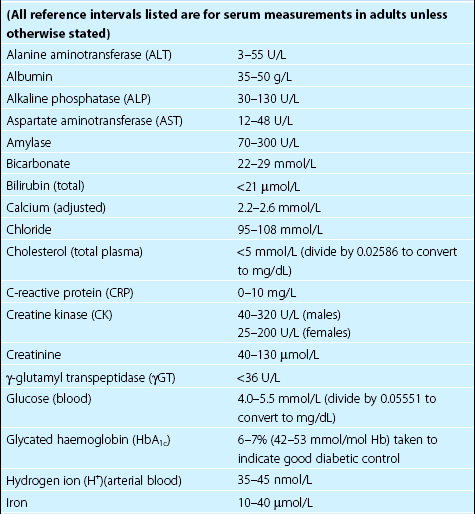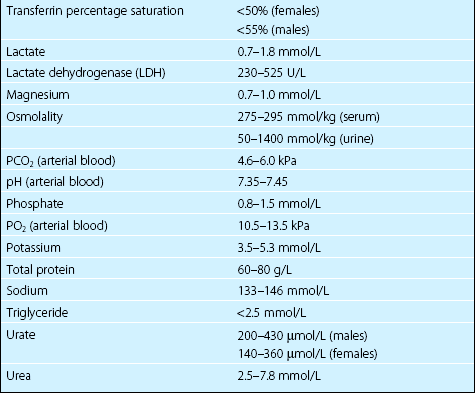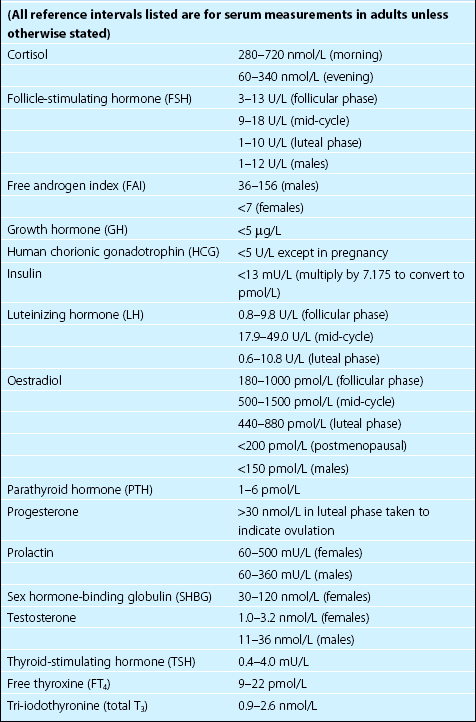Reference intervals
Below, in Tables 5.1 and 5.2, is a list of reference intervals for a selection of tests that are performed in clinical biochemistry laboratories. Where available, reference intervals have been adopted from those suggested by Pathology Harmony, which is a UK-based project aiming to harmonize reference intervals for common analytes across the UK. In the absence of this approach, individual laboratories should use reference intervals that are based on values obtained from subjects appropriately selected from local populations, but this is not always feasible. For some analytes, e.g. glucose and cholesterol, conversion factors are supplied to allow different units to be compared. The list is not intended to be comprehensive; it is merely provided for guidance in answering the cases and examples in this book. Please note that age- and/or sex-specific reference intervals are available for a range of analytes including alkaline phosphatase, creatinine, and urate. The sex-specific ranges for urate are shown in Table 5.1. Glucose, insulin and triglyceride all rise postprandially and should, where possible, be measured in the fasting state.




